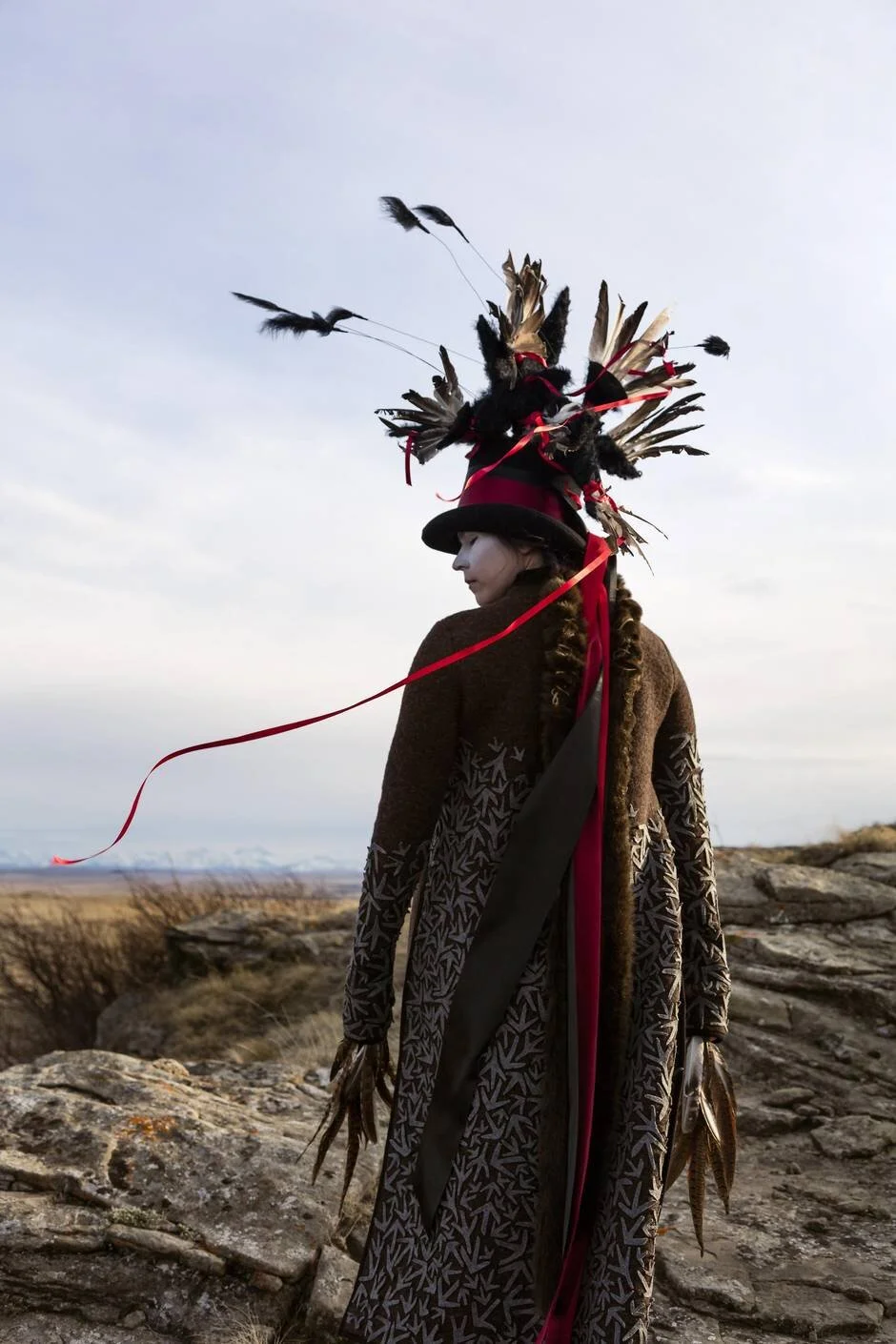The Things That We Build And Place There: An Interview With Wanda Nanibush
Wanda Nanibush is an Anishnaabe activist, organizer and author from Beausoleil First Nation near Penetanguishene, Ont.. She’s also the Curator of Indigenous Art and co-lead of Indigenous and Canadian Art at the Art Gallery of Ontario. Nanibush’s work is in constant conversation with the sociopolitical context and history that we grapple with on a regular basis. A theme that consistently underlies the exhibitions she curates is the insistence on responding to and reckoning with the urgent questions the artists themselves raise in and through their work—the personal is always political and becomes the professional; Nanibush’s writing, curation and activism are manifestations of her focus on the social justice issues and movements she has written about and taken part in. I met up with her at the Art Gallery of Ontario in January of this year, where we talked about the relationships between objects, places and people.
—Nehal El-Hadi
Meryl McMaster. Bring me to this place, 2017.
Giclée print, 152.4 × 101.6 cm. Courtesy of the artist and Stephen Bulger Gallery and Pierre-François Ouellette art contemporain.
NE: What—for you—is the relationship between object and place?
WN: I’d have to step into what is an object in the Indigenous context: objects are living beings, spirits, holders of history, memory, story, that kind of thing. Where people have manipulated the environment to turn that place into an event arena or ceremonial space or a place that holds story or memory by the way they manipulate objects in that space, whether it’s rocks or landforms or things that we build and place there.
For example, Lori Blondeau has a new series where she photographs herself wrapped in this beautiful, vibrant, royal red fabric. She’s standing on rocks that are significant in the sense that one of them used to be massive, and then the colonialists blasted it with dynamite and so now it’s in pieces. In another image, she’s standing in another spiritually significant place on the prairies that has been destroyed over time. We have these long lineages and power that comes from our connection to the land and our place within it. And her culture, which is Saulteaux/Cree/Métis and mine, Anishnaabe, are very much women-centred philosophies.
There’s another photography series by Meryl McMaster, where she places her body on the land at Buffalo Jump in Wanuskewin, which is where the Blackfoot and Cree used to run the buffalo off the ledge. She’s wearing this amazing coat that she’s made with these prairie chicken feet that are sewed on to it in felt—it’s also to say that the prairie chicken has gone extinct there. And then she has created this headdress of feathers.
Or Michael Belmore, who’s interested in the relationship between geological time, in terms of object and place. We just purchased a work of his called Édifice, where he painstakingly carved these huge river boulders into a kind of bed. He placed copper in between each rock, and when they’re very close to each other, the copper glows, like there’s this power and heat coming up. It’s quite stunning.
NE: In terms of craft, I also think about the relationship between the land and materials, and how crafted objects are representative of very specific geographies.
WN: For sure. I went to the Indian market in Santa Fe a long time ago, and I was intensely impressed by the amount of pottery and varied pottery that they have there. Many Indigenous artists that live in the country called Canada did the same. There was this black pottery, and I was chit chatting with a woman who made it. She told me this whole story about how they get this specific colour to come out: “You have to put excrement into the burning.” I was like, oh wow.
Carl Beam went and studied in Santa Fe and came back to Ontario and started making these ceramic pots. And he realized that the landscape where he comes from, Manitoulin Island, is all sand and clay. His house is made out of adobe. He saw this connection between Arizona and an island in Georgian Bay in Ontario in terms of materials and what he could do with them. It’s tied to an ethic about land and how you work with it—adobe-style housing and ceramics are earth-friendly ways of operating in the world. They don’t produce waste and they don’t off-gas like our modern materials do.
And in a different way, Rebecca Belmore’s recent work, like the piece she did for the Human Rights Museum. She used clay specific to Winnipeg and the land that the building is on. She’s always so attentive to materiality and its history and thinking about the violence that happens in that land and the erasure of human beings and people from it. She worked with the community to make hundreds and hundreds of hand-formed beads to create a massive blanket of them hanging from the ceiling. It’s a deeply monumental work that has light flowing through it but it’s actually quite heavy. It’s massive. And then she worked with clay on two other pieces that we had in the show here at the AGO: Tower and Tarpaulin. She made a tower of shopping carts and created a landslide of clay inside of it that flows down to the ground and covers the floor and it does have this sense of contradiction: we’re building up as more and more people can’t afford homes. I think that people are working with materials in all these kinds of ways from traditional pottery to contemporary installation. The clay that was used on Tower was Redart clay, partly because working in a museum setting you can’t have organic materials.
Wanda Nanibush is the co-lead curator of the Art Gallery of Ontario’s department of Indigenous and Canadian art. In addition to independent curation and numerous publications across journals, magazines and books, she held the post of Aboriginal Arts Officer at the Ontario Arts Council, Executive Director of ANDPVA and strategic planning for CCA.
To read the rest of this interview, purchase the Spring/Summer 2020 issue of Studio.








